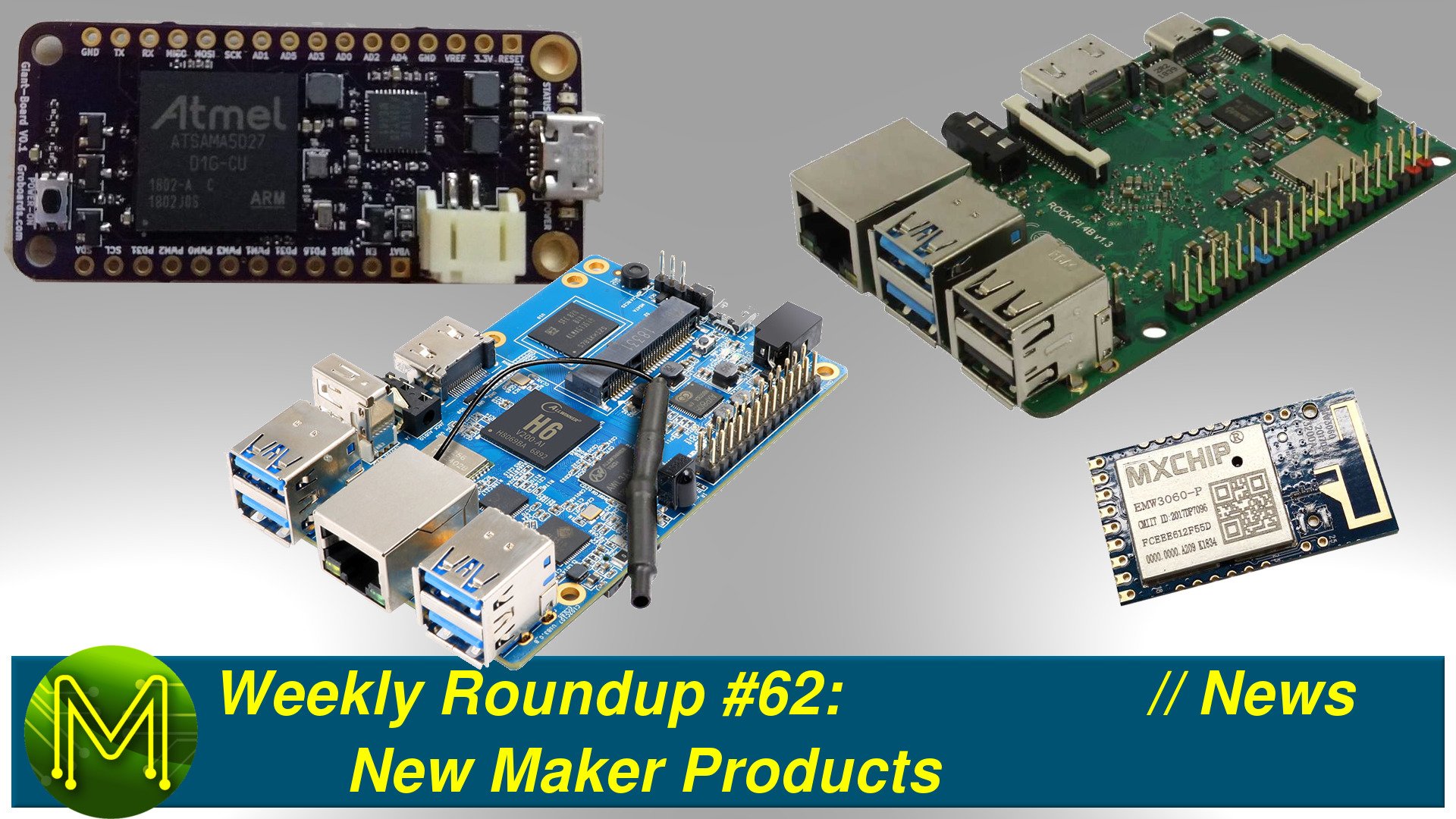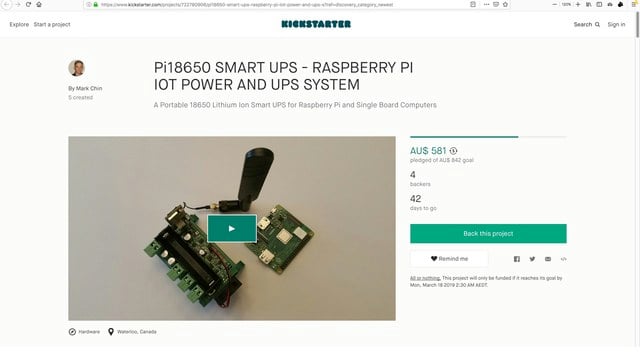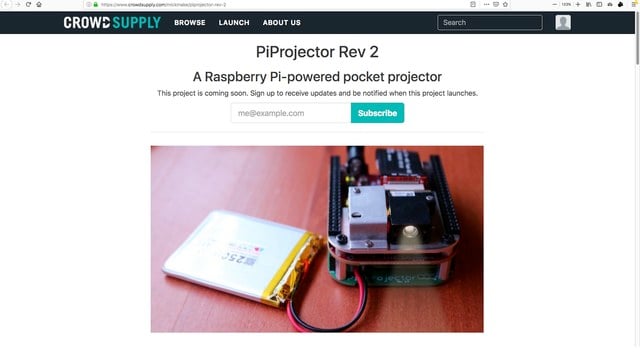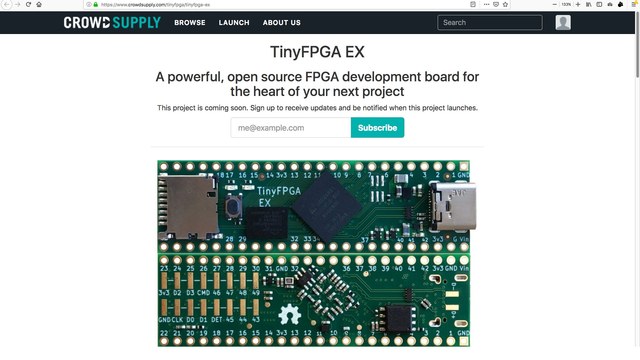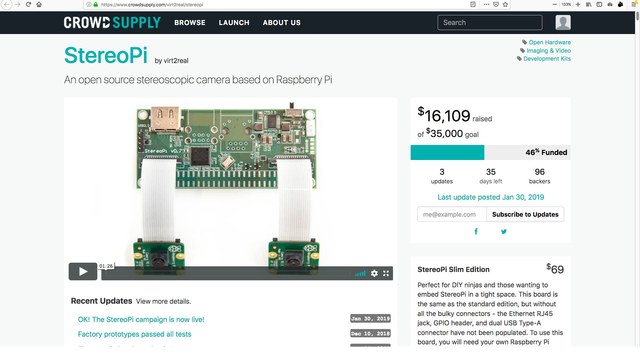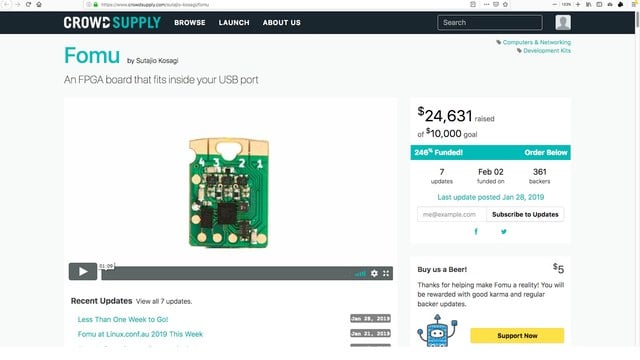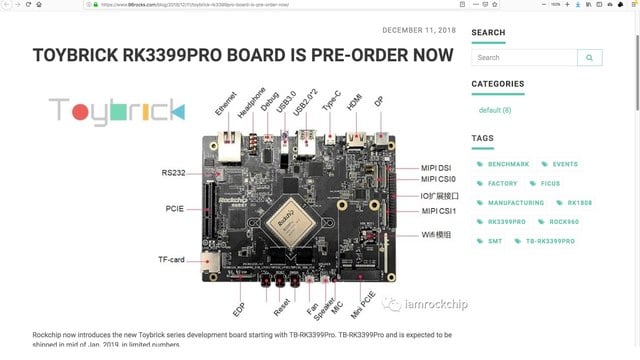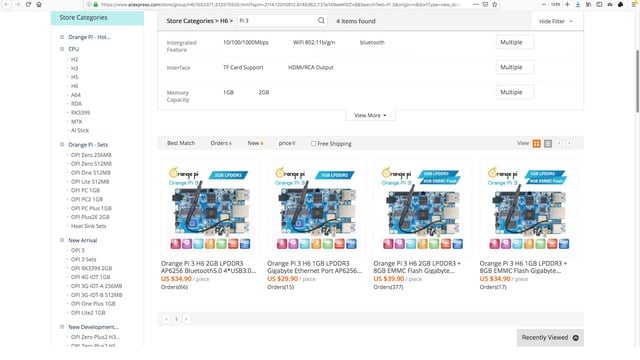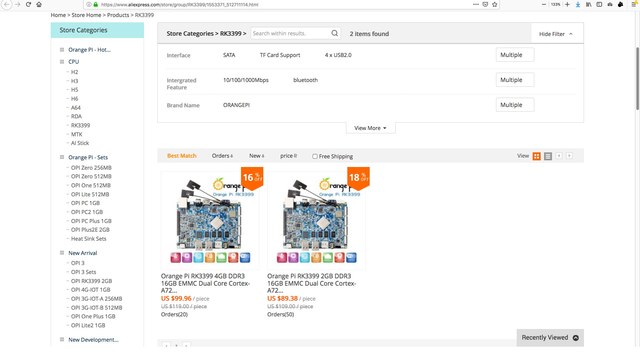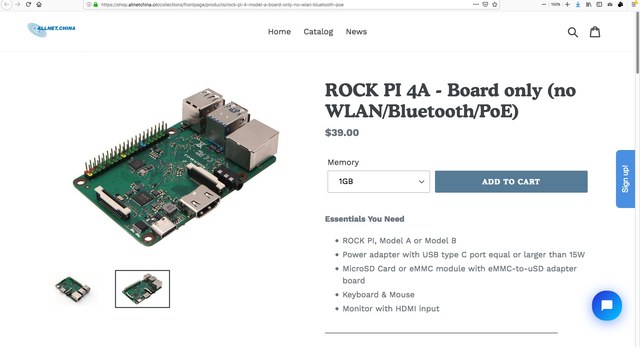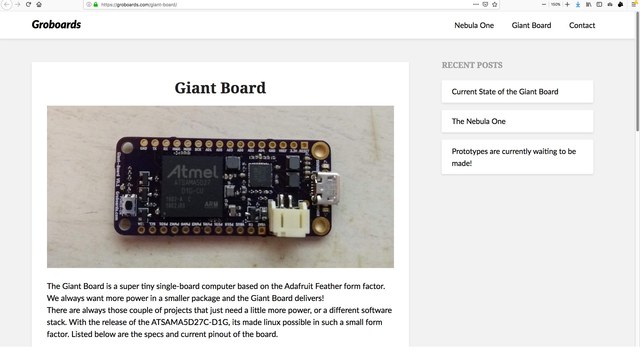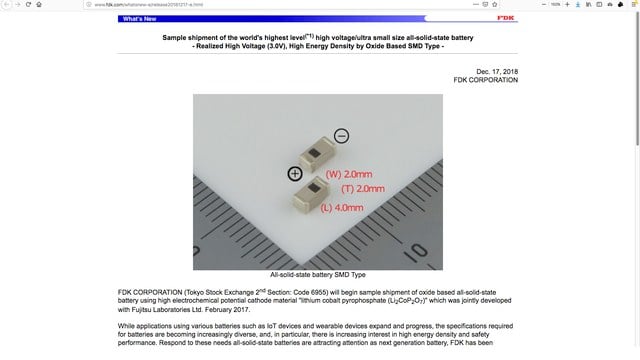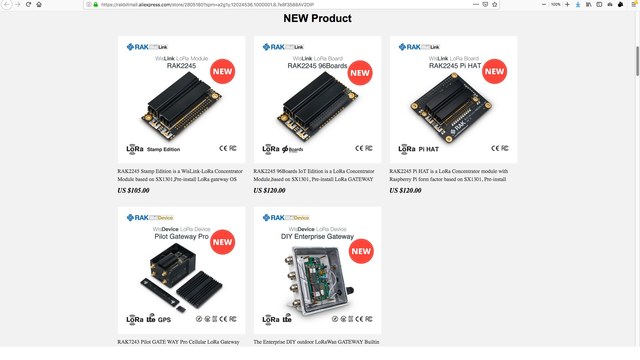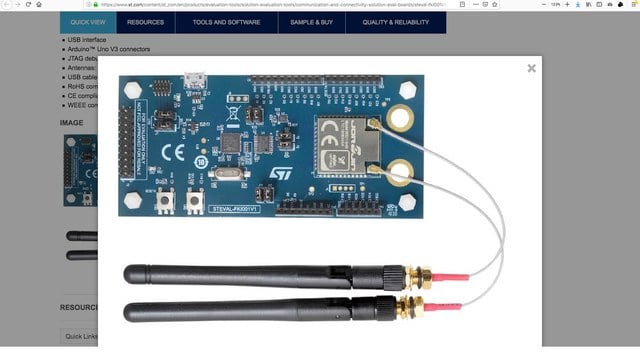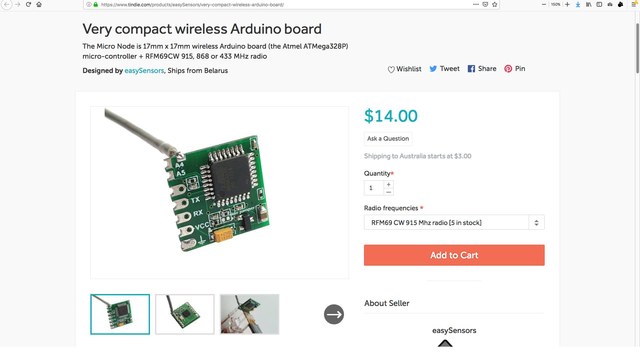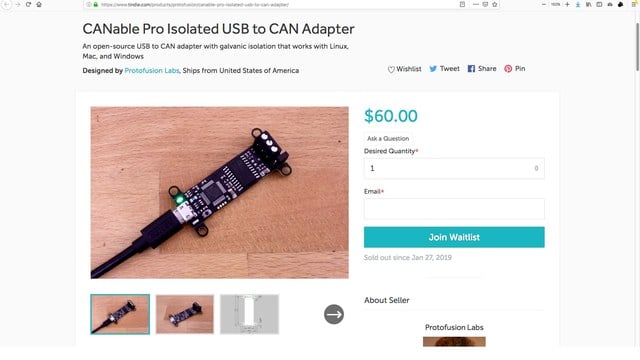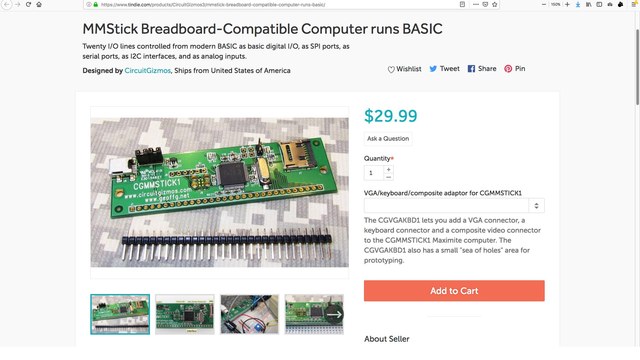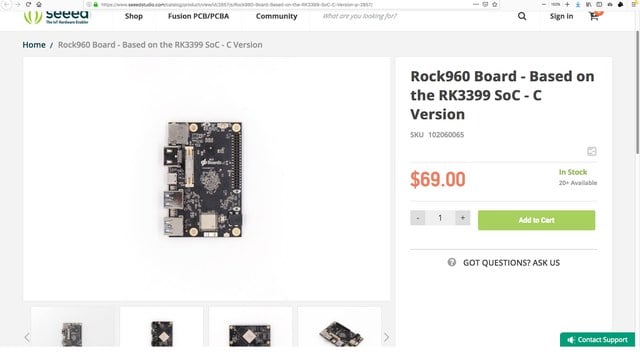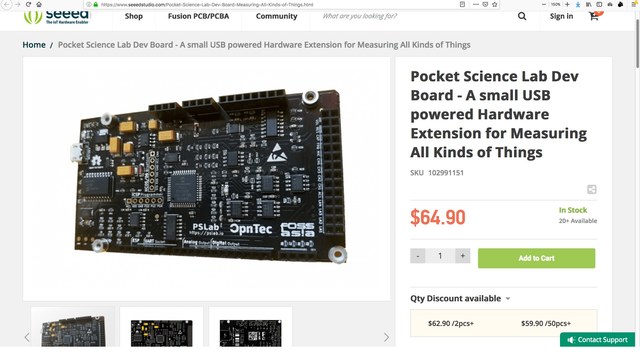Weekly Roundup #62: New Maker Products // News
Aaaaand back in 3. 2. 1.
The first Weekly Roundup of the year and we’re already seeing some really cool things happening in the SBC space. Oh and there’s also some other cool things.
SBC predictions for 2019
So, I thought I’d start off giving you some predictions for what the SBC world will bring us this year. Predictions are always tricky things and you can either end up with egg on your face or look really cool. But anyway here’s my top three four predictions:
RAM
4G RAM will start to be common on SBCs. Memory has been pretty expensive this last year caused by a massive shortage, but we’re starting to see prices drop already as new factories have spun up. So expect more SBCs to come out with more memory.
SoC
The SoCs of choice will be the RockChip RK3399 followed by the Allwinner H6. In fact the RockChips are already gaining a lot of traction and will become the “gold standard”. There is a lot of work being done within the OSS community to “de blob” graphics drivers, but I suspect that a lot more effort will go into the RockChips.
Storage
The humble SD card will be used less and less for O/S storage with mPCIe and M.2 storage becoming more common. In fact SSD storage will become almost mandatory as I think we’ve all had enough of corrupt SD cards.
Power
USB Type-C will become a standard for power. In fact it’s impossible to reliably power an SBC with anything other than a DC jack or USB Type-C. Micro USB was great for a while, but really… let’s move on.
Crowd Funding
KickStarter
Pi18650
First up on Kickstarter is something similar to my monthly project. It is essentially a small UPS for a Pi based on 18650 batteries. The MCU that does all the work is the MSP430 and it can accept a 24v DC input and output a variable voltage up to 16v. There’s also a header for plugging in an ESP32 for full wireless control over the unit and on-board temperature and humidity sensors.Cthulhu Shield
This next campaign is for an Arduino shield that provides a development platform for “sensory substitution” and “sensory augmentation”.This shield comes with an flexible electrode array that you stick in your mouth. Yup… that’s right. Stick it in your mouth and then not only do you have another input device for control, but you can also provide feedback using biphasic voltage pulses. This is actually pretty cool and they have some starter projects such as heat-vision, GPS directions and ultra-sonic hearing all using your tongue.
LEDTwee V1
For those people who backed the previous LEDTwee campaign, our Kiwi cousin from over the pond is back with another version of it on Kickstarter called the LEDTwee v1, (for some reason). Thought it’d be called v2…but anyway this is pretty invaluable when you’re manually loading SMD LEDs on to PCBs. The tweezers have an inbuilt battery that has enough power to light up LEDs so you can get the orientation right before loading onto a PCB.
The Pilot Remote Control
The Pilot Remote Control is a board that runs the ATMega32U4 along with an nRF24L01 module that provides up to 1.5km line-of-sight range for controlling whatever you want. Also has two joysticks, mini USB port for programming via the Arduino IDE, battery charging, LCD screen and a couple of headers breaking out UART, I2C and SPI signals.PiBurn
If you have your own laser engraver, then this might interest you. It’s essentially a stepper controlled rotary attachment that allows engraving circular objects, like mugs. Cool!TickerTape Retro Display
And if you’re in to retro displays, then this multi-segment LED display can be controlled over I2C and is powered from a 3.3 to 6v DC supply. So can work with 3.3 or 5v logic levels. There’s also full Arduino IDE library support for it.Crowd Supply
The Ark Dev Kit
The Ark Dev Kit is up on pre-launch over at Crowd Supply. This is a handheld device that takes a Pi Compute Module 3L along with LiPo battery charging, a few buttons and a 4.7" capacitive touch screen. It also comes with support for the Dat Protocol, which provides peer-to-peer communications such as chat, file-sharing and mini websites. This is something that gives you true mobile, offline peer-to-peer communications.PiProjector Rev 2
Oh, look, my PiProjector is up on pre-launch. About time I launched it!TinyFPGA EX
Another thing also up on pre-launch is the TinyFPGA EX, which is the next invocation of Luke Valenty’s FPGA breakout boards. This one contains the Lattice ECP5 FPGA… not that other company who I won’t name, because this video might be taken down for copyright infringement… you know the one I’m talking about, Robert!Maker LED Display
If you’re in to small displays then this pre-launch is for a 64 by 9 LED display with either white, blue, green, orange or pink LEDs. It uses the IS31FL3731 LED matrix drivers, an ESP8266 and LiPo battery charging. Looks pretty cool.StereoPi
Back in Weekly Roundup #58 we saw the StereoPi in pre-launch. If you want a quick and easy way to add stereoscopic vision to your Pi projects you can now pick it up over at Crowd Supply. With it you can do things like, stream stereoscopic 3D video to YouTube, build real-time depth maps using OpenCV, create panoramics using hugin and even a 3rd person view of real life. Cool.Fomu
Back in Weekly Roundup #61 we saw the Tomu FPGA. Well it’s live now and the campaign is nearly over, but you’ll be able still pick it up from Crowd Supply, cause it’ll go into in-demand mode.GroupGets
While over at GroupGets …
datum-Weather
You can pick up the datum-Weather, which is a small breakout board running a SAMD21 and firmware that collects data from a BME280 environmental sensor and pushes it out the USB port in JSON formatted packets. You can control via a pseudo HTTP restful interface to set reporting rates and alerts.Meaty-3+
The Meaty 3+ is a board from SparkFun running not only the FTDI FT231XS USB to serial IC but a 1A 3.3v regulator able to supply juice to pretty much anything.Raspberry Pi Buffer Board
If you want to be able to safely use the Pi with 5v logic levels, then this board allows all the GPIOs to be used in 5v circuits.AudioMoth
The AudioMoth has been around for a while now. Well a newer version has arrived. This one is capable of recording up to 384ksps to SD card using a MEMS microphone and the EFM32 Gecko processor. Also has USB interface for control and an onboard RTC for keeping track of timestamps.Honorable mentions
Meanwhile elsewhere on the interwebs …
Pi 3+ Compute Module
The Raspberry Pi Foundation have released the new Pi 3+ compute module. This runs the new BCM2837B0 SoC which claims to have much better thermals when under load, but it still produces the same amount of heat as the previous CM3. So for industrial applications, where electronics are contained within un-vented enclosures, it may be a moot point. You can pick these up currently from AdaFruit and SparkFun, amongst other places.Qihua CQH6 SoM
However, if you’re looking for an alternative, CNX software pointed to this one which I’m not even going to pronounce because I will definitely get it wrong. This runs the more recent AllWinner H6 SoC, which is a quad-core Cortex-A53 running at 1.8GHz. You can get it with 512M, 1G or 2G DDR3 RAM and 4, 8, 16 or 32G eMMC flash. This is one that is suited to clustering; that is, it has GbE, a fast SoC, local storage and it’s cheap. This SBC has actually been around for a while now as a post on the Armbian forums is dated back in 2018.ToyBrick RK3399PRO
Another 96boards compliant SBC has just been released from another company with a funny name. The ToyBrick is based on the RK3399Pro and is a little expensive, but for US$250 you get a PC style board with pretty much everything broken out from the SoC:HDMI, DisplayPort, eDP, MIPI-CSI & DSI, GbE, USB3.0, USB Type-C, but not only mPCIe, but also a full PCIe slot.
You can get it with either 3G RAM and 16G eMMC or 6G RAM and 32G eMMC with the latter being US$50 more.
Orange Pi 3
Another Orange Pi has hit the market - the Orange Pi 3 is based on the AllWinner H6 and pushes out 4 USB3.0 ports, one USB2.0, GbE, WiFi, HDMI, MIC, IR, SD slot and mPCIe. You can get it with 1 or 2G RAM and with or without 8G eMMC flash. You can power it from either micro USB or the more sensible 5v, 2A DC jack.4GB Orange Pi RK3399
Back in Weekly Roundup #51 we saw the Orange Pi RK3399. Well the Orange Pi guys have a new version with another 2G RAM added for only US$100. Apart from that, nothing else has changed - you’re still getting a huge amount of stuff broken out from the SoC.Rock Pi 4
Last year we saw the Rock PI 4 announced, which is yet another RK3399 based SBC in a Pi friendly form factor. Not only do you get the RK3399 SoC, but, 1, 2 or 4G DDR4 RAM, eMMC socket, SD slot, HDMI out, MIPI-CSI & DSI… Really, all the connectors are identical to the Pi. They’ve placed the SoC underneath, which is a much better place for mounting proper heatsinks and frees the top for add-on boards and hats.But wait, that’s not all… There’s three things that make this board even more special.
- It uses USB Type-C for power.
- It has an M.2 NVME key slot.
- And they plan to sell the base unit for only US$39.
This might become my new favorite board. Unless the Raspberry Pi 4 comes with SSD support of the box.
Giant Board
The Atmel SAMA5 series ICs are a pretty decent SoC. Last year I started a design based on this as there weren’t any PCBs around running it. My PCB is a little way off yet, but you can buy one in an AdaFruit Feather format called the GiantBoard. All the important stuff is broken out from the 500MHz Cortex-A5 SoC with 20 GPIOs, SD slot and LiPo charging.I noticed that GroBoards also have another SBC based on the Octavo SoC, which runs on the BeagleBones, but this board is in a much smaller format.
Say goodbye to the Quark
Over at Intel they seem to think that the Maker market isn’t worth investing in and have been pulling the plug on a number of Maker products. Last year we saw the demise of the Curie. This year they’ve kicked off the year with an End Of Life announcement for the Quark SoC. From July 2019 you will no longer be able to buy any of the Intel Quark SoCs and MCUs. Shame really.SMD batteries
If you’ve ever had to fix old electronics equipment, then you would have come across a leaking battery or two. There’s a new battery technology which claims to be not only leak proof, but also reliable and tiny. The Lithium Cobalt Pyrophosphate batteries come in small SMD packages that look large capacitors, but can provide 3v at 140uAh. That’s not a lot of current, but for something that won’t leak at all, they can now be placed on PCBs as battery backups for Real Time Clocks without fear of damaging anything.RAK Wireless LoRa gateways
RAK Wireless are starting to become one of the major companies in the wireless space for Makers. They already have a few LoRa gateways, but they now have some upgraded versions:The RAK2245 LoRa concentrator module is a Pi hat running an SX1301 LoRa module providing 8 uplink and 1 downlink channels, Ublox MAX-7Q for GPS and a heatsink to keep things cool.
The RAK2248 is the same, but in a 96boards form factor.
Then there’s the Pilot Gateway Pro which is a complete solution running the RAK2245 LoRa concentrator and RAK2013 mobile module along with a Pi3 in a nice enclosure.
And finally the RAK7249 DIY enterprise LoRa gateway, which runs a RAK634 WiFi module, mPCIe based LoRa concentrator, 4G mobile, L70 GPS module 5Ah LiPo all contained in an IP67 rated enclosure.
Nice!
STMicro LPWAN dev kit
If you’re in to SigFox, then STMicro have come out with an evaluation board based on the Jorjin WS2118 module. This provides a Cortex-M0 MCU, with Bluetooth LE, SigFox and sub-GHz transceivers. It also has Arduino Uno compatible headers and USB interface. So programming via the Arduino IDE should be a breeze.Maker Shops
Tindie
Meanwhile over at my favorite Maker store, Tindie …
tinyDebian AllWinner H3 SBC
A group called TinyDebian have come out with a custom PCB based on the NanoPi NEO Air. The tinyWiFi-5G is essentially the same as FriendlyARM’s SBC, but this one uses the Realtek RTL8821CS module instead of the AP6212. This module provides the missing 802.11 b/g/n/ac and Bluetooth LE 4.2 to the mix.Compact LoRa Arduino board
You can also pick up this tiny board that runs an ATMega328P and RFM69CW module, which is a short range, 915MHz transceiver. The board can drop down to 4uA in sleep mode and is powered from 3.5 to 6.5v.Isolated USB to CAN Adapter
Fiddling around with CAN busses is fun, but there’s always the risk that you might just fry something. Like your car. The CANable Pro is a USB to CAN bus adaptor that provides full galvanic isolation. Which basically means you can fry one end of the circuit and not have it affect the other side. It provides a simple USB UART, so pretty much every bit of software will be able to talk to it.MMStick Computer
And no, this is not anything to do with last year’s April fools joke. The MMStick is actually something you can buy. It’s a small board for retro-heads running a PIC32 MCU and providing a BASIC emulator with programs stored on SD card, allowing control over 20 GPIOs accessible on a breadboard compatible header.AdaFruit, Seeed, SparkFun, DFRobot, DigiKey
There’s a number of cool things up on Seeed Studio …
ROCK960 model C
Back in Weekly Roundup #45 we saw the Rock960 being released, which was pretty expensive back then. They now have a cost optimized version called the Rock960 C. For US$69 over at Seeed Studio you can pick up this version with 1G RAM, eMMC socket instead of soldered IC and they have removed the USB Type-C.Pocket Science Lab Dev Board
Seeed Studio also have the Pocket Science Lab Dev board. This runs the PIC24EP256 MCU at 70MHz, providing some cool features like:- 12 bit voltage and capacitance meters.
- 3 DC buck converters with variable voltage from -5 to 5v and current from 0 to 3.3mA.
- 4 channel 2MSPS oscilloscope and logic analyzer.
- 2 signal generators from 5Hz to 5KHz and 4 PWMs providing up to 8MHz.
- Solder pads for an ESP8266 module.
- And it’s all fully programmable over ICSP.
Nice.

